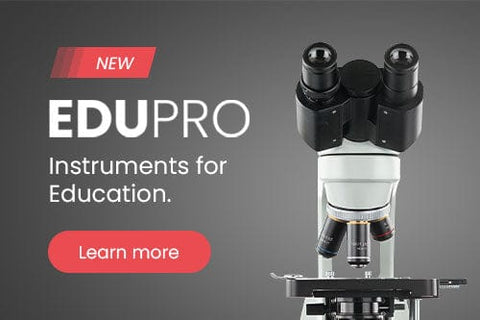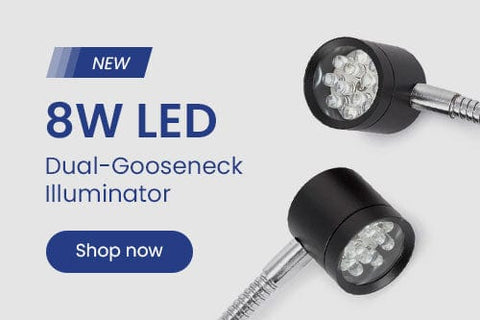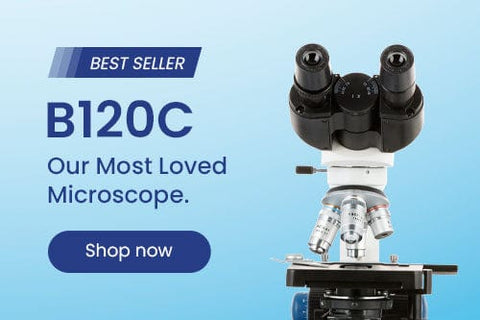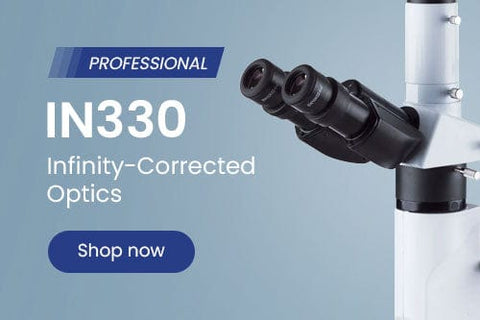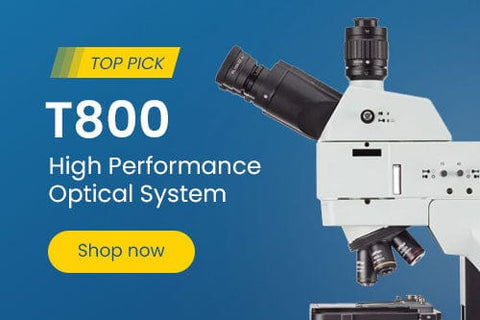- Microscopes
- Cameras
- Lab Supplies & Equipment
- Shop By Brand
- Lab Supplies by Category
- Analyzer Consumables
- Balances
- Bags
- Beakers
- Bench Scale Bases
- Bottles
- Bottletop Burettes
- Bottletop Dispensers
- Boxes
- Blank Microscope Slides & Cover Slips
- Blood Collection
- Caps
- Carboys
- Centrifuges
- Centrifuge Tubes
- Cold Storage
- Containers
- Cryogenic Vials
- Culture Tubes
- Cylinders
- Dispensers
- Digital Dry-Baths
- ESR Products
- False Bottom Tubes
- Flat Bottom
- Funnels
- Gel Documentation
- Glassware
- Glass Test Tubes
- Histology
- Homogenizers
- Hotplates-Stirrers
- Inoculation Loops and Spreaders
- Liquid Handling Products
- Manual-Electronic Pipettors-Pipettes
- Microscope Slides
- Overhead Stirrers
- Pipette Controller (Serological Filller)
- Pipette Tips
- Plastic Test Tubes
- PCR Tubes, Strips & Plates
- Racks
- Repeater Pipettor
- Rockers
- Rotary Evaporators
- Serological Pipettes
- Shakers
- Spectrophotometers
- Syringe Tips
- Sample Tubes
- School/Classroom Supplies
- Screwcap Test Tubes
- Self-Standing
- Test Tube Racks
- Test Tubes & Vials
- Transport & Storage Tubes
- Thermal Mixers
- Transfer Pipets
- Urinalysis
- Vacuum Pumps
- Weighing Dishes
- Lab Equipment
- Balances
- Bench Scale Bases
- Centrifuges
- Digital Dry-Baths
- Gel Documentation
- Homogenizers
- Hotplates-Stirrers
- Overhead Stirrers
- Pipettors
- Rockers
- Rotary Evaporators
- Shakers
- Serological Pipettes
- Spectrophotometers
- Thermal Mixers
- Vacuum Pumps
- Liquid Handling Products
- Manual-Electronic Pipettors-Pipettes
- Pipette Tips
- Racks
- Pipette Fillers-Controllers
- Repeater Pipettor
- Syringe Tips

Cost effective products and solutions designed to improve laboratory efficiency, safety and results.
SHOP BENCHMARK SCIENTIFIC >
- Slides & Accessories
- Slides
- Cameras
- Illuminators
- Adapters
- Eyepieces / Objectives
- Bulbs
- Magnifying Lamps
- Monitors and Tablets
- View All Categories
- Adapters
- DSLR Adapters
- USB Camera Adapters
- Ring Light Adapters
- Power Adapters
- Barlow Lens
- Books & Experiments Cards
- Bags & Cases
- Bags
- Cases
- Cameras
- Circuit Board Holders
- Cleaning Kits
- Condensers
- Darkfield
- Phase Contrast Kits
- Polarizing Kits
- Dust Covers
- Eye-Guards
- Eyepieces
- 20mm
- 23mm
- 30mm
- 30.5mm
- Filters
- Microscope Filters
- Illuminator Filters
- Fluorescence Kits
- Conversion Kits
- Filter Cubes
- Focusing Racks
- Fuses
- Illuminators
- Bulbs
- LED Illuminators
- Fiber Optic Illuminators
- Fluorescent Illuminators
- Ring Lights
- Stand Lights
- Goosenecks
- Gooseneck Attachments
- Immersion Oils
- Loupes
- Magnifying Lamps
- Clamp Lamps
- Desktop Lamps
- Rolling Stand Lamps
- Mechanical Stages
- Monitors and Tablets
- Calibration Slides & Stage Micrometers
- Stage Warmers
- Stain Kits
- Stands
- Articulating Arm Stands
- Boom Stands
- Table Stands
- Tweezers
- Other Accessories
- Shop By Industry
- Shop By Industry
- Botany
- Agronomy & Forestry
- Horticulture
- Phytopathology
- Chemistry
- Biochemistry
- Biotechnology
- Cannabis
- Pharmaceutics
- Consumables
- Beer & Wine
- Cosmetics
- Food & Beverage
- Electronics
- Circuit Boards & General Electronics
- Mobile Phone Repair
- Semiconductors & Wafers
- Environmental
- Asbestos
- Ecosystem Research
- Mud Logging
- Soil Treatment
- Water Treatment
- Forensics
- Ballistics
- Fingerprint Analysis
- Genetic Identification
- Hair & Fiber Analysis
- Handwriting Analysis
- Industrial
- Aerospace
- Automotive
- Dental Lab & Production
- Glass Industry
- Industrial Inspection
- Mechanical Parts
- Paper Industry
- Petrochemical
- Plastics
- Printing Industry
- Quality Assurance & Failure Analysis
- Textiles & Fibers
- Tool Making
- Wood Production
- Jewelry & Gemology
- Engraving
- Gemology
- Jewelry Repair
- Stone Setting
- Watch Repair
- Hobby
- Coins & Collecting
- Stamps
- Modeling & Assembly
- Sculpting
- Repair
- Telescopes
- Metallurgy
- Archaeology
- Geology
- Mining
- Petrology
- Medical & Microbiology
- Anatomopathology
- Bacteriology
- Biochemistry
- Cell Culture
- Cytology
- Dental Microbiology
- Dermatology
- Dissection
- Gout & Rheumatology
- Hair & Fiber Analysis
- Hair Transplant
- Fluorescence
- Hematology & Live Blood Analysis
- Histopathology
- Mycology
- Medical Devices
- Microsurgery
- Neuropathology
- Oncology
- Parasitology
- Pathology
- Semen Analysis
- Virology
- Veterinary & Zoology
- Breeding & Semen Analysis
- Entomology
- Fecal Smears & Floats
- Marine Biology
- Ornithology
- Veterinary Medicine
- Zoology
- Shop By Industry
- Students
- Telescopes
- Buy With Prime
- Sale
- Compound Microscopes
- Shop By Brand
- AmScope
- Euromex
- Omax
- Shop by Head Type
- Binocular
- Monocular
- Trinocular
- Multi-head & Training
- Shop By Specialty
- Brightfield
- Darkfield
- Phase Contrast
- Inverted
- EPIfluorescence
- Polarizing
- Digital Integrated
- Metallurgical
- Shop By Application
- Education
- Research
- Veterinary
- Compound With Digital Head
- Shop Best Sellers
- Shop All Compound
- Stereo Microscopes
- Shop By Brand
- AmScope
- Euromex
- Shop By Objective Type
- Fixed Power
- Zoom Power
- Single Lens
- Common Main Objective
- Shop By Stand Type
- Articulating Arms
- Boom Stands
- Gooseneck Stands
- Table Stands
- Other Stands
- Shop By Head Type
- Binocular
- Monocular
- Trinocular
- Simul-Focal
- Shop By Industry
- Video Inspection
- Industrial Inspection
- Microscope Heads
- Shop Stands
- Articulating Arm
- Boom Stands
- Table Stands
- Stereo With Digital Head
- Shop Best Sellers
- Shop All Stereo
- Specialized Microscopes
- Digital Microscopes
- Kids, Student Microscopes
| Amscope Team
Objective Lens vs Ocular Lens: A Comprehensive Guide
Objective Lens vs Ocular Lens: Understanding the Differences

The microscope is one of the most iconic and commonly used tools in many scientific fields. We rely on these devices to observe things that are so small that they are otherwise invisible to the naked eye. To do this, the microscope makes use of both an ocular and an objective lens. If you don't know the difference, don't worry; this article will tell you everything you need to know about these two lens types and how they function together to make microscopes work.
Objective Lenses vs Ocular Lenses: How Are They Different?
What is the difference between ocular and objective lenses? There are a few key differences:
Position of the Lenses
The objective and ocular lens are found on different parts of the microscope. The ocular lens is part of the eyepiece and therefore closer to your eye as you look into the microscope. The location of the eyepiece always indicates the correct observing position at or near the top of the microscope.
The objective lens, on the other hand, looms over your subject, typically near the middle of the microscope. This is because the objective lens is responsible for gathering light reflections from your subject. It then shoots a beam of light into the microscope, which becomes an image that you observe from the eyepiece containing the ocular lens.
Objective Power vs Eyepiece Field Power
Often, your microscope will have at least three objective lenses on a rotating disc, each with a different magnification level. If you find your current lens lacking, it's easy to switch to one of the others. Objective lenses with higher magnification have shorter focal lengths, or less space between the lens and the surface of the subject. Since depth of field decreases as magnification increases, those wanting a broader field of view should stick to shorter lenses. For example, if your current objective lens has 100x magnification but you need a wider field of view, you'll want to switch to a lens with lower magnification, such as 40x.
In contrast, your microscope's eyepiece will usually have only one ocular lens, though you can usually swap the eyepiece as well. The standard magnification level of the ocular lens is 10x, but there are stronger ones available. When selecting an eyepiece, you should think about eye relief, or the required distance between your eyes and the lens. Eyepieces with large eye relief give you some space, while those with small eye relief require you to be up close.
Objective Lens Options: Scanning, Low-Power, High-Power, and Oil Immersion Objective
There are four main types of objective lenses, each with a different diameter of field of view, and therefore a different magnification level:
- 4x: This is called a scanning lens and is often the shortest objective lens you'll have access to. Use it when you want as much of the subject as possible in the image.
- 10x: The low-power lens might not seem that strong, but combined with your ocular lens, it's still quite powerful.
- 40x: Once you start using the high-power lens, you'll begin to notice the finer details of your subject, but at the cost of field of view. Use this lens to narrow in on specific parts of your subject.
- 100x: To reach this level of magnification, you'll need an oil immersion lens. This type of lens uses immersion oil to stabilize the light emitted from your subject, giving you a clear image. These specialized lenses are a bit more challenging to use, and they're not recommended for moving subjects.
There are many other kinds of objective lenses out there, so you have no shortage of options. Do some research and find out which lens best suits your needs and goals.

How These Lens Elements Work Together
While it may initially seem redundant to have two separate lenses in your microscope, they do far more together than they ever could on their own.
Increase the Overall Magnification Power
Figuring out the total magnification power of your microscope is easy: just multiply the power of your objective lens by your ocular lens. For instance, if your eyepiece has 10x magnification and you're using a low-power lens (10x), you have 100x magnification in total. Switch to your scanning lens (4x), and magnification becomes 40x. It's important to keep in mind that the ocular lens and objective lens total magnification is ultimately what you're viewing. If you were viewing your subject through a single lens, then that lens would have to be extremely powerful to match what you can easily get with both. Therefore, one lens isn't nearly as effective without the other.
Produce Incredible Microscope Images With Better Resolution
Your objective lens isn't just for increasing the size of your subject; it can also provide better resolution. For example, achromatic lenses contain two smaller lenses (convex and concave) that are used to limit the refracting light of your subject, and phase-contrast lenses use phase plates to pick up miniscule changes in wavelength amplitude, making moving subjects easier to observe. Lenses like these help reduce ghost images so that the real image is projected to your eyepiece.

Don't Miss Out on the Advantages of a Light Microscope
Everyone knows that microscopes are a crucial tool in science, but few realize how versatile and adaptable they can be. Thanks to the variance in lenses, microscopes can serve all kinds of purposes for all kinds of people, from the doctor identifying cancer cells to the child wanting to get a closer look at their favorite bug. Once you know how all of the optical elements work together, like the ocular lens vs objective lens, it's easy to maximize the efficiency of your microscope.
This is why a microscope is such a good investment for anyone interested in science. If you want to understand and examine the world around you, there's no better tool. AmScope's selection is built to last, and we carry all kinds of objective lenses as well, so a microscope from us will serve you well for many years.
Looking for the perfect microscope for a current or aspiring scientist? Check out AmScope's selection today!
Magnification: Everything You Need to Know." (August 15, 2019) AmScope Blogs.
"Understanding the Different Types of Microscope Objective Lenses." (August 30, 2019) AmScope Blogs.
"How to Clean Microscope Lenses." (June 05, 2020) AmScope Blogs.
"What Are the Functions of the Objective Lenses?" (April 27, 2018) Sciencing.
"The Focal Length of Microscope Objectives." (April 25, 2017) Sciencing.
"Microscopy with Oil Immersion." Experimental Biosciences.
"What are the different eyepieces?" Microbehunter Microscopy.
Free Shipping on orders $149+
Same day shipping for orders within the contiguous U.S.
Easy Returns
Hassle-free 30-day return policy. 100% satisfaction guarantee.
Quality Products
5-year warranty on AmScope microscopes.
Got a question?
Speak to our team of experts and find the products you need.






